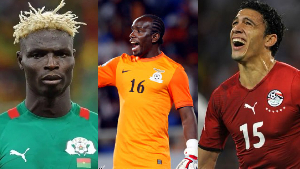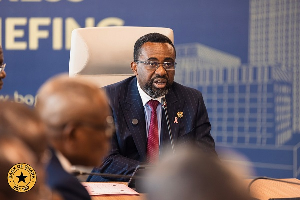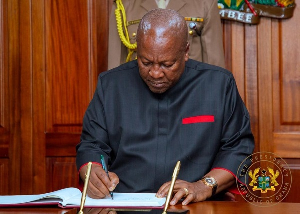By Kwame Okoampa-Ahoofe, Jr., Ph.D.
On Saturday, November 8, 2008, I published an article on Modernghana.com captioned “Please, Keep the Head and Let’s Move on with Our Lives!” at the time, I suggested that were the author in a position to determine whether or not to negotiate with the Dutch government for the return of the head of Otumfuo Badu Bonsu II to Ghana, he would ensure that several significant demands were met before he endorsed such dubious gesture on the part of The Hague.
And here must be recalled the fact of Nana Badu Bonsu II having been beheaded in 1837 by a Dutch commander called Maj.-Gen. Jan Verveer. The Ghanaian king had been accused of causing the deaths of several Dutch soldiers who had undertaken an expedition into the Akan heartland in search of slaves and eligible military recruits for Dutch colonial service in present-day India, Pakistan and Bangladesh.
It clearly appears that the eighteenth-century Ghanaian king had been aggrieved by the callous, deliberate and systematic depletion of able-bodied citizens of his kingdom by the Gold Coast-garrisoned Dutch colonialist adventurers. If so, then Otumfuo Badu Bonsu II, unquestionably, deserves to be lauded for fiercely and jealously defending the dignity and sovereignty of his people.
The Dutch, on the other hand, appear to have envisaged the slain king and his polity as abjectly subservient and, thus, prime grist for Dutch colonialist ambitions; and thus the swift and brutal response to Nana Badu Bonsu’s purely defensive act.
The puzzle here, though, is that the reader is also told that the Dutch, in summarily decapitating the Ghanaian king, had primarily reacted legally in consonance with an unspecified treaty ratified in 1656, approximately two centuries earlier. If this observation has validity, then what serious students of Ghanaian history ought to be scrutinizing are the contents of the said treaty, which appears to have guaranteed that Ghanaian leaders like Otumfuo Badu Bonsu II would unreservedly accede to the massive, reckless and rampant enslavement of their citizens and subjects without protest.
Obviously, in valiantly rising up to the occasion by staunchly defending his countrymen and women from Dutch colonial predators, Nana Badu Bonsu II cannot, in anyway, be begrudged his enviable status of a national hero and a virtual legend.
Still, whether merely returning his decapitated noggins, deeply immersed in formaldehyde for some 170 years, amounts to restoring Nana Badu Bonsu’s dignity, in the form of a royal burial, or interment, remains to be seen. For traditionally, Akans are not known to bury the severed heads of their chieftains in elaborate state funereal celebrations. And so the Dutch may do well to inform us, Ghanaians and their victims, where the rest of the remains of our slain king were disposed of, so that we, the living, may, fittingly, reconnect Nana Badu Bonsu’s severed head with the rest of his body, even symbolically, being fully cognizant about the practical realities of Mother Nature having taken its logical course.
Then also, the indispensable question of the authenticity of the “formaldehyded” head in the Leiden museum being, indeed, that of Otumfuo Badu Bonsu II needs to be promptly and scientifically resolved, in order to forestall the possibility of a national contretemps or embarrassment. We must also recall here, for the benefit of our audience, that the great surge of interest currently surrounding the apparent discovery of the decapitated head of Nana Badu Bonsu II primarily occurred as a result of a Dutch novelist and researcher, by the name of Arthur Japin, having serendipitously unearthed the same in a museum at the University of Leiden. It is, therefore, not quite clear whether the reported willingness of the Dutch government to returning the severed head of Otumfuo Badu Bonsu II is, indeed, a humanitarian gesture purely based on goodwill and the great respect which The Hague attaches to the dignity of Ghanaian humanity, in general, and the dignified humanity of our cultural custodians and geopolitical protectors, in particular. We deeply recognize the fact that the answer to the preceding may not be very simple.
The title of this article ought to therefore, perforce, be taken with a modicum of both sarcasm and irony. For, ultimately, the sub-ethnic affiliation or provenance of Nana Badu Bonsu II is not exactly what is at stake here. And, of course, it goes without saying that his being mistaken for an Asante chieftain largely stems from the fact of the name of Badu Bonsu being strikingly both mainstream Asante and patrician. Matters are further complicated by the fact of the Paramount King of Ahantaman also, like the august Asante monarchy, reserving the use of the official title of “Otumfuo,” “The All-Powerful One.” This latter fact likely must have been what prompted Mr. Arthur Japin to readily and immediately presume Nana Badu Bonsu II to have been a major Asante divisional chieftain or an Omanhene.
The problem here, however, is that among the Asante, it is only the Kumasehene who, being federally recognized as primus inter pares, or foremost among equals, reserves the right of the use of the honorific of “Otumfuo.” And since there is absolutely no evidence of any Asantehene having been decapitated by the Dutch, it ought to have been glaringly evident right from the get go, as it were, that the slain Nana Badu Bonsu II had been a non-Asante paramount chieftain.
What makes the foregoing clarification imperative, has obviously and primarily to do with the unparalleled geopolitical status occupied by the Asantehene in modern Ghanaian history, that is the Ghana of the 1400s to the present. In sum, its political primacy and dominance has also virtually guaranteed that the Asante of modern Ghana would be the most envied of their countrymen and women. Consequently, when it was initially, and in retrospect erroneously, revealed that Nana Badu Bonsu II had been an Asante chieftain, many were the quick and tartly mocking voices that launched into an epic celebration of “another hitherto hidden” crushing Asante defeat at the hands of a superior European power.
What remains now is for Otumfuo Badu Bonsu XV, the sitting Ahantaman ’Manhene, and his sub-ethnic polity to ensure that the “remorseful” and “conciliatory” Dutch government fully underwrite the spiritual and, perhaps, also the historical rehabilitation of Otumfuo Badu Bonsu II, even as we, Ghanaians, are notorious for our morbid penchant for funerary celebrations, even in these exceptionally hard times.
Then also, as I highlighted in my article of November 8, 2008, captioned “Please, Keep the Head and Let’s Move on with Our Lives!” it may also be necessary for us to embark on an irredentist epistemological project vis-à-vis the recent Asiatic extension of our collective historical identity.
*Kwame Okoampa-Ahoofe, Jr., Ph.D., is Associate Professor of English, Journalism and Creative Writing at Nassau Community College of the State University of New York, Garden City. He is the author of twenty books, including “Ghanaian Politics Today” (Atumpan Publications/lulu.com, 2008). E-mail: okoampaahoofe@aol.com. ###
Opinions of Thursday, 2 April 2009
Columnist: Okoampa-Ahoofe, Kwame














